Can you help us advocate for women behind bars by contributing today? Donate
Women and gender
There are 190,600 women locked up in the United States. While roughly 10 percent of the total incarcerated population, women still represent a larger portion of people in prisons and jails than in previous decades. Moreover, in many states, women's incarceration rates are continuing to grow faster than men's.
But the experiences of women — as well as trans and nonbinary people — are too often lost, because men comprise the vast majority of the incarcerated population.
Our research is shedding light on the injustices faced by women and LGBTQ+ people behind bars, as well as on issues like money bail and family separation that disproportionately affect women.
Below is some of our key research:
Reports
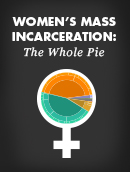 Women's Mass Incarceration: The Whole Pie 2024
Women's Mass Incarceration: The Whole Pie 2024
Our report breaks down where and why 190,600 women are locked up in the U.S. It also also explains the unique role of local jails in women's incarceration.
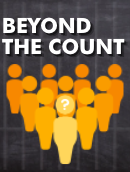 Beyond the Count: A deep dive into state prison populations
Beyond the Count: A deep dive into state prison populations
Our analysis of rare survey data shows how mass incarceration has been used to warehouse marginalized women, including those struggling with poverty, substance use disorders, and housing insecurity.
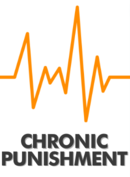 Chronic Punishment: The unmet health needs of people in state prisons
Chronic Punishment: The unmet health needs of people in state prisons
Our followup report to Beyond the Count explores the medical treatment of people in state prison, including how incarcerated women and expecting mothers fare.
 States of Women's Incarceration: The Global Context 2018
States of Women's Incarceration: The Global Context 2018
We rank U.S. states on their rates of women's incarceration, comparing states to each other and to countries around the world. The report also shows the growth of women's incarceration in the U.S. over the last century.
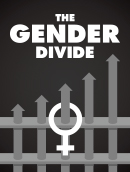 The Gender Divide: Tracking women's state prison growth
The Gender Divide: Tracking women's state prison growth
Our report breaks down women's incarceration trends in state prisons for all 50 states since 1978, and identifies states where criminal justice reforms have left women behind.
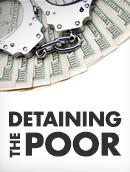 Detaining the Poor: How money bail perpetuates an endless cycle of poverty and jail time
Detaining the Poor: How money bail perpetuates an endless cycle of poverty and jail time
We find that the ability to pay money bail is impossible for too many women because it represents almost a year of the typical female defendant's income.
 Prisons of Poverty: Uncovering the pre-incarceration incomes of the imprisoned
Prisons of Poverty: Uncovering the pre-incarceration incomes of the imprisoned
We show that even before their incarceration, people in prison are much poorer than Americans of similar ages. This was the first report to provide national data on the pre-incarceration incomes of incarcerated women.
Briefings
- Who is jailed, how often, and why: Our Jail Data Initiative collaboration offers a fresh look at the misuse of local jails, by Emily Widra and Wendy Sawyer, November 27, 2024
Using a novel data source, we examine the flow of individuals booked into a nationally-representative sample of jails along lines of race, ethnicity, sex, age, housing status, and type of criminal charge. - Two years after the end of Roe v. Wade, most women on probation and parole have to ask permission to travel for abortion care, by Wendy Sawyer, June 18, 2024
Since the 2022 Dobbs decision, 21 states have restricted abortions earlier than the Roe v. Wade standard. Now, more of the 800,000 women on probation and parole must seek abortion care out-of-state — but for many, whether they can get there depends on an officer’s decision. - Since you asked: How many women and men are released from each state’s prisons and jails every year?, by Leah Wang, February 28, 2024
We’ve drilled down into 2019 data to show prison and jail releases by sex in each state and made our best estimates of how many women and men were released from prisons and jails nationwide in 2022. - Updated data and charts: Incarceration stats by race, ethnicity, and gender for all 50 states and D.C., by Leah Wang, September 27, 2023
New data tables provide the most recently available incarceration data for people in state prisons and in local jails, by race and ethnicity and by sex. - What is civil commitment? Recent report raises visibility of this shadowy form of incarceration, by Emma Ruth, May 18, 2023
Shadowy “civil commitment” facilities actually foster the traumatic and violent conditions that they are supposed to prevent. - How 12 states are addressing family separation by incarceration — and why they can and should do more, by Emma Ruth, February 27, 2023
Defending incarcerated parents’ rights and attending to the needs of the children are vital goals that more states should pursue. - New data: LGBT people across all demographics are at heightened risk of violent victimization, by Emily Widra, July 11, 2022
A new report from the Bureau of Justice Statistics highlights just how common violent victimization is among women, LGB people, and trans people. - What the end of Roe v. Wade will mean for people on probation and parole, by Wendy Sawyer and Wanda Bertram, June 30, 2022
For many of the 666,413 women on probation and parole, traveling out of state for abortion care is already next to impossible. - Prisons and jails will separate millions of mothers from their children in 2022, by Wendy Sawyer and Wanda Bertram, May 4, 2022
58% of all women in U.S. prisons are mothers, and other important facts to know this Mother’s Day. - What the Survey of Prison Inmates tells us about trans people in state prison, by Tiana Herring and Emily Widra, March 31, 2022
We look at the experiences of 29 incarcerated transgender people before and during their incarceration. - Recent studies shed light on what reproductive “choice” looks like in prisons and jails, by Katie Rose Quandt and Leah Wang, December 8, 2021
States that are otherwise hostile to abortion rights are especially likely to make it difficult for incarcerated people. - Unsupportive environments and limited policies: Pregnancy, postpartum, and birth during incarceration, by Leah Wang, August 19, 2021
Recent data offers an unprecedented, detailed look at pregnancy and postpartum experiences in prison. Findings indicate that jails, prisons, and youth facilities have yet to adequately recognize pregnancy and postpartum needs either in policy or in practice. - Rise in jail deaths is especially troubling as jail populations become more rural and more female, by Leah Wang, June 23, 2021
New data show record high deaths of people locked up in jail, as jail populations have shifted toward smaller, rural jails and growing numbers of women. A lack of accountability and acknowledgement of women’s unique disadvantages all but ensures more deaths to come. - Visualizing the unequal treatment of LGBTQ people in the criminal justice system, by Alexi Jones, March 02, 2021
LGBTQ people are overrepresented at every stage of our criminal justice system, from juvenile justice to parole. - Prisons and jails will separate millions of mothers from their children in 2021, by Wanda Bertram and Wendy Sawyer, May 5, 2021
The most important statistics about the incarceration of mothers and pregnant women. - Since you asked: What role does drug enforcement play in the rising incarceration of women?, by Tiana Herring, November 10, 2020
Women are being jailed at higher rates than ever. We explore whether drug arrests and substance abuse could be having an impact. - Prisons neglect pregnant women in their healthcare policies, by Roxanne Daniel, December 5, 2019
Our 50-state survey finds that in spite of national standards, most states lack important policies on prenatal care and nutrition for pregnant women. - Who's helping the 1.9 million women released from prisons and jails each year?, by Wendy Sawyer, July 19, 2019
Approximately 1 in 8 people released from state prisons, and more than 1 in 6 people released from jail, are women. But the programs proven to help them are far from adequately funded. - Policing Women: Race and gender disparities in police stops, searches, and use of force, May 14, 2019
We analyze gender and racial disparities in traffic and street stops, including arrests, searches, and use of force that occurs during stops. - The dismal state of transgender incarceration policies, by Elliot Oberholtzer, November 8, 2017
We evaluated the current transgender and gender non-conforming policies of 21 states in terms of PREA standards, World Professional Association for Transgender Health (WPATH) Standards of Care, and correctional staff training and treatment of transgender individuals. All but one come up short. - LGBTQ youth are at greater risk of homelessness and incarceration, by Daiana Griffith, January 22, 2019
Homelessness is the greatest predictor of involvement with the juvenile justice system. And since LGBTQ youth compose 40% of the homeless youth population, they are at an increased risk of incarceration. - New report from Essie Justice shows women with incarcerated loved ones are traumatized by marginalization, by Lucius Couloute, May 14, 2018
Mass incarceration intensifies the financial and social burdens that already fall too hard on women. - Jail will separate 2.3 million mothers from their children this year>, by Wendy Sawyer and Wanda Bertram, May 13, 2018
80% of the women jailed each year are mothers. We're inflicting profound damage not only on them, but their children as well. - State-level studies identify causes of the national "gender divide", by Wanda Bertram, April 11, 2018
Our January report showed how incarcerated women are being left behind, but to identify specific areas for improvement, state-level research is needed. - BJS update: Women's state prison populations rose while men's fell, again., by Wendy Sawyer, January 10, 2018
Released on the heels of our recent report on women's state prison populations, a new BJS report shows that in 2016, the "gender divide" in incarceration trends widened even more. - Unraveling the connections between race, incarceration, and women's HIV rates, by Emily Widra, May 8, 2017
Current research points to an unexpected contributor to the high rates of HIV infection among Black women: the mass incarceration of Black men. - Girls are being put behind bars more and more. Will Congress do anything to help?, by Joshua Aiken, September 30, 2016
While comprehensive criminal justice reform for adults has failed to pass in Congress, a bill lingering in the Senate could still overhaul how our juvenile justice system works.
Related issues
 Jails and bail
Jails and bail
In stark contrast to incarcerated men, who are mostly held in state prisons, close to half of all incarcerated women are in local jails. We explain why so many people are in local jails, and how jails separate families.
 Health and drug policy
Health and drug policy
Incarcerated women are even more likely than incarcerated men to suffer from substance use disorders, mental illnesses, and other health problems.
 Probation and parole
Probation and parole
Three out of four women under correctional control are not behind bars, but on probation. Our research uncovers the harms of community supervision.
Research Library
Didn't find what you were looking for? We also curate a database of virtually all the empirical criminal justice research available online. See the sections of our Research Library on women and LGBTQ issues.
 Women's Mass Incarceration: The Whole Pie 2024
Women's Mass Incarceration: The Whole Pie 2024 Chronic Punishment: The unmet health needs of people in state prisons
Chronic Punishment: The unmet health needs of people in state prisons States of Women's Incarceration: The Global Context 2018
States of Women's Incarceration: The Global Context 2018 The Gender Divide: Tracking women's state prison growth
The Gender Divide: Tracking women's state prison growth Detaining the Poor: How money bail perpetuates an endless cycle of poverty and jail time
Detaining the Poor: How money bail perpetuates an endless cycle of poverty and jail time Prisons of Poverty: Uncovering the pre-incarceration incomes of the imprisoned
Prisons of Poverty: Uncovering the pre-incarceration incomes of the imprisoned Jails and bail
Jails and bail
 Probation and parole
Probation and parole


